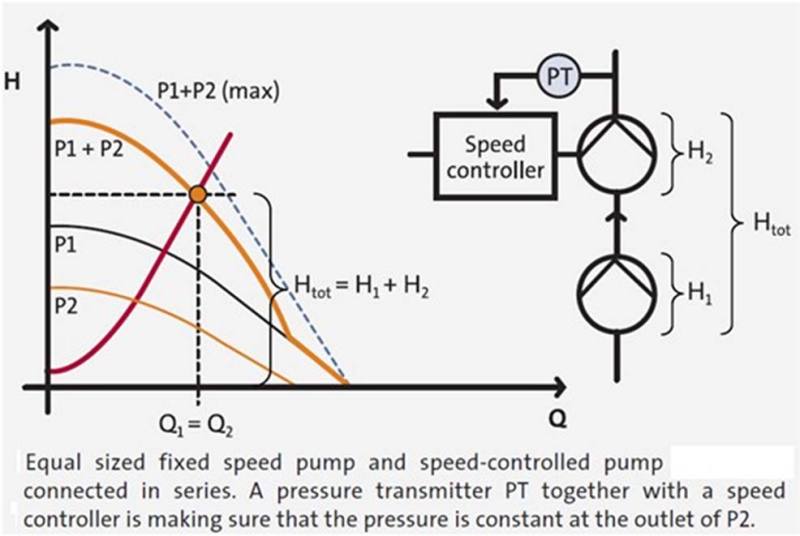Certainly there are requirements for control of flow, I'm just saying that controlling the pump to achive that objective is not always the most suitable method, especially in transportation pipelines. Control of pumps is best accomplished based on pressure, because it keeps the system within operating limits, no matter what the flow and pressure relationship might be at any given time. IMO pressure control is better with two phase gas/liquid system flows. I think more often than not in two phase flow you will be lucky if flow control works at all, as flow and pressure relationships can vary wildly depending on if liquid is running up a hill and gas down the other side, or vice versa, or other liquid hold up and slugging characteristics of the system. It might work at certain flow rates where liquids are not held up, but if flow drops to the point where liquid holdup becomes dominant, flow control may not work at all. VFD-Pressure control also works for slurries, as the pump can be made to slow down, or speed up based on suction and discharge pressure limits. If you can't maintain minimum suction pressure, or if you exceed discharge pressure, you have no alternative but to slow down the pump, no matter what you are pumping, then try to solve the problem some other way.
I suspect that you are not quite as interested in actual flow control as you are in simply varying the flow rate by any method that might work. In processes where you must inject a specific amount of one chemical into another, I can readily see that flow control (by mass or volumetric rate) is useful. Heavy crude oil pipelines benefit by injecting a diluent oil into a heavy oil at a controlled rate such that a lower resulting viscosity is maintained, or from injecting a specific amount of corrosion inhibitor, quantity varying directly with flow rate. As those processes are independent of pressure, flow control, normally in addition to control of suction and discharge pressures to keep the pumps and piping system within pressure operating limits, is highly useful.
If we look at heating/cooling systems where two flows are mixed to maintain a certain temperature, you could do that with flow control, or pressure control, but depending on entering water temperature variations, those relationships may not always require mixing in constant proportions. In that case neither flow or pressure control would be appropriate to control the process, however pressure control might still be included to keep pumps and system within operating limits. Temperature control should be used to control the process itself.
I still think that controlling pumps and system safety is one thing and that can usually be based on pressure, sometimes including temperture as well. Controlling process can be (and usually is) another thing entirely and the two can only be combined where there are supplemental and direct predictable relationships between them. Otherwise provide pressure control for system and equipment safety and provide separate controls based on whatever other parameter you might need to monitor and control, such as flow, temperture, color, viscosity, or salt content as necessary, but not necessairily wired to VFD pump control.


![[2thumbsup] [2thumbsup] [2thumbsup]](/data/assets/smilies/2thumbsup.gif) (in joke)
(in joke)